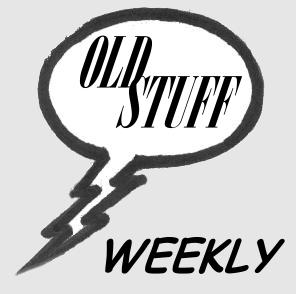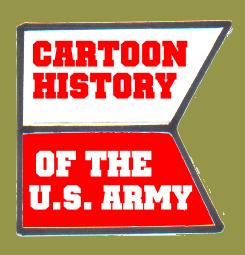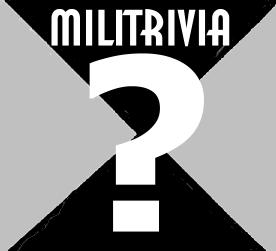
THE RETURN OF THE OOZLEFINCH!
The Oozlefinch, that strange creature that is both a mascot to and a guardian of Air Defenders everywhere, is back! It's story is as strange as its appearence...

In 1905 the Oozlefinch made its first appearance at the Headquarters of the Coast Artillery Corps: Fort Monroe, Virginia. The man who reported it, Captain H.M. Merriam, was the only person who actually saw it, and unsure of his wits at the time he was loathe to describe it. However, one feature of the bird which would always come out in any conversation in the bar of the "o" Club was the appearance of its huge, all-seeing eyes.

By coincidence, a statuette of a weird bird was soon located by Mrs. E.R. Tilton, the wife of a colonel assigned to Fort Monroe. This example of local handicraft exhibited all the features noted by Captain Merriam: huge eyes, big feet, and a clear absence of flying skill. The statue of the Oozlefinch, as it was soon named, was eventually given a place of honor in the post's Casemate Club.

Under the influence of spirits from the Club, other officers soon came forward to swear to the existence of the Oozlefinch. As time went by, more details of the characteristics of this strange creature were observed...

The Oozlefinch's strange eyes were found to have no eyelids, and were open day and night. Its eyes give it the abaility to observe more details than any other known creature. It is said that the Oozlefinch can even turn its bloodshot eyes inward, when self-contemplation is desired.

The Oozlefinch, when airborne, is ungainly and it tends to fly backwards. The Oozlefinch would rather stay on the beach and gaze out at sea. Its huge feet can snatch and crush anything it attacks.
Coast Artilleryman adopted the Oozlefinch as their mascot since it shared many of their charcteristics. Like members of the CAC, the Oozlefinch was always on guard.

When Americans were sent to Europe in 1917 to fight in World War One, Coast Artillerymen went as well. Not as seacoast gunners, but because soldiers were needed to learn the new and mysterious craft of antiaircraft gunnery, and since Coast Artillerymen knew as little as anyone else, the job was given to them. Some CAC soldiers also arrived to form a railway artillery brigade.

The Oozlefinch went to Europe too, developing hearing which allowed him to track aircraft at night, and to hone calculating skills which made it possible to predict where an airplane would be in a few seconds. As the oozlefinch evolved, so did the skills of the Coast Artillerymen, until their prowess at shooting down airplanes surpassed that of their French and British brothers in arms. The distinctive insignia of several Coast Artillery regiments incorporated the strange bird in recognition of its growing importance.

The Oozlefinch kept watch over the Coast Artillery Corps between the wars, both the traditional seacoast gunners and the upstart antiaircraft men. It was a tough time for both, as many people were convinced that there would be no more war. There was scarcely any money for guns or practice ammunition. But training went on, and what readiness the CAC could maintain, it did.

The, at Pearl Harbor 1941, the United States was struck, then struck again, in the Philippines. Some gunners opened their ammunition cases to find rounds that had made in 1919. Defeat was inevitable in the Philippines, despite the heroic defense of the 200th Coast Artillery gunners and their comrades in Bataan. But the treacherous Japanese had only fired the first shot in a war that would end in defeat for them and their Axis allies.

Seacoast gunners were for all purposes phased out; antiaircraft became the primary arm of the CA branch. These air defenders fought the vaunted Luftwaffe, which had virtually had its way since the Fall of France. These air defenders took part in the defense of England as Hitler tried to "blitz" it out of existence. These air defenders protected the Remagen Bridge from Goering's last gap and shielded Antwerp from the V-1 robot bombs. It was the finest hour of the Antiaircraft artillerymen.

The Oozlefinch was there too, spotted as it peered into the skies over London, seen in some tree near a remote 90mm outpost in Italy, or perched on the barrel of a Bofors gun on a Pacific island. The strange bird provided the new generation of air defenders an appreciation of their own abilities as they learned to pierce the darkness over the battlefield with radar, as they used primitive computers to set shells on interception courses with aiplanes that flew faster and faster, and as they endured harsh conditions around the world.

Air defenders were sent home following the end of the war, defend the American homeland against the threat posed by Communist bombers. Guns were reinforced and eventually replaced by a new weapon: missiles. The Oozlefinch was there, at Red Rock Canyon, watching the first tentative shots of these weapons. From his Yucca perch he silently approved of this new, high-speed weapon which could bring the mighty airplane down. He reluctently left his home at Fort Monroe and moved to Fort Bliss, Texas. No place could have been more different from his birthplace, but he took it in stride in the company of his faithful gunners.

The AA gunners also went to fight Communism directly in Korea and Vietnam, proving themselves up to the challenge by turning their antiaircraft weapons against the enemy in order to turn the tide at key moments. The continueing need for antiaircraft men was recognized, and eventually they were organized into their own branch: the Air Defense Artillery.

When ADA was established the Oozlefinch wasn't far; he was hanging out on the roof of Building 2, watching the proceedings. The Oozlefinch knew that with their own branch Air Defenders would go far.

And far have they gone. ADA soldiers kept the peace in Germany and in South Korea against envious Communist forces. Air Defenders jumped into Grenada with U.S. Airborne forces to save American hostages. They went into Panama with the Army to topple a drug dealer turned dictator. But it wasn't until a little country named Kuwait was invaded that ADA soldiers had a chance to show what they could do.

ADA units were among the first to go that fateful August. The Oozlefinch went to, hidden in the belly of one the many Air Force transports that brought Hawk and Patriot batteries to the Gulf to do battle with a power-mad dictator who thought he could take on the world. His mightiest weapon, the scud missile, was to no avail: air defenders knocked it from the sky before it could hit Coalition troops and innocent civilians. The Oozlefinch could be proud of his progeny; they did what so many said for so long was impossible: they hit a missile with a missile.

The Patriot soldiers were treated like heroes when they returned, but then the 1990s came. All of the Hawk units were disbanded. Patriot units were either deactivated or reflagged. And the 32nd AADCOM, with no East Germany to face any more, sadly furled its colors.

These were rough times for the Oozlefinch. The world was told that wars were a thing of the past, that "International Policing" was the thing of the future. Politicians supported the idea of defending the United States with their voice, while witholding the money that would make missile defense possible. And Air Defenders were sent to the Middle East on endless rotations or semi-annual "Saddamexes" while other Americans seemed oblivious of dangers developing from abroad.
The Oozlefinch watched at the skilled Patriot missile gunners had their training reduced for the sake of "Consideration of Others" training and mandatory collective thought management when some other soldier somewhere else screwed up. But the Oozlefinch knew the day when ADA would be appreciated would come again.
And now it has come: a second Pearl Harbor. This time it was New York and Washington instead of Pearl Harbor and Clark Field. And this time, they killed more Americans.
The Oozlefinch is back and reinvigorated as he looks about. ADA soldiers have been asked if they can defend key locations from other such attacks, and have responded with a strong "Yes!" Now is the time to defend ourselves from missile attack as well. So the Oozlfinch peers upward, to the edge of space even as Air Defenders prepare for new missions.
Whether they help defeat future airborne attacks to the United States or missile attacks, or drones, or whatever they send at us, the Oozlefinch will be there, ever vigilent.
FIRST TO FIRE!












